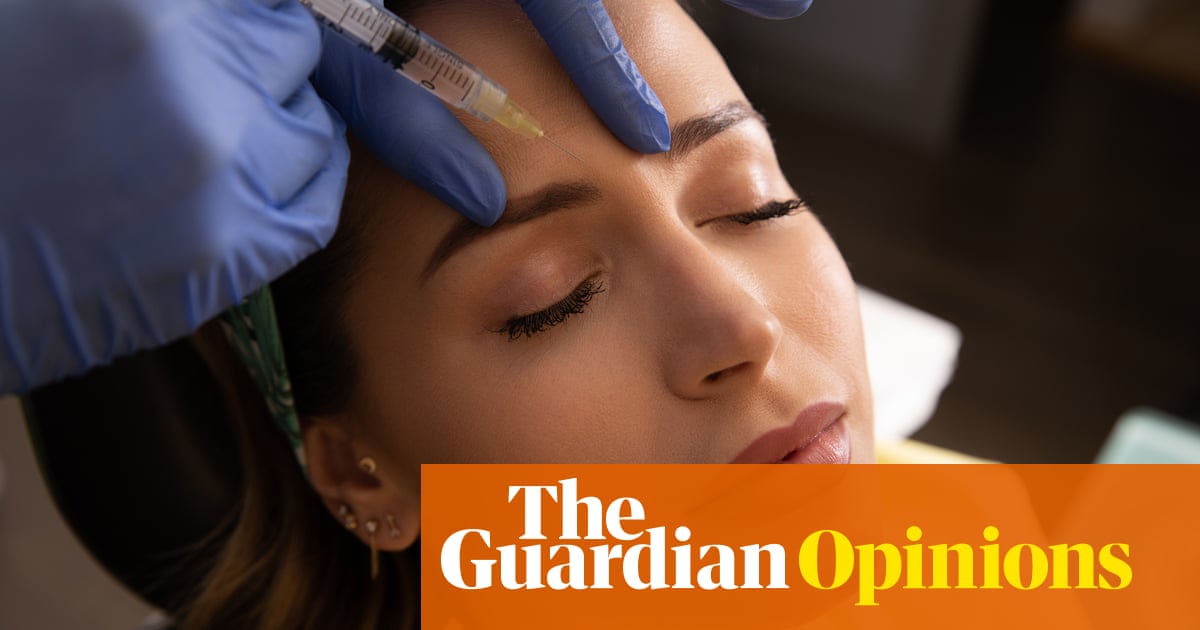
Everyone goes through it: a reckoning with one’s own mortality in the mirror, poking at eye bags and tugging at folds of loose skin. Am I looking a bit rough? It’s part of the human condition to fear ageing, but among millennials and gen Z there seems to be a heightened anxiety around growing older, coupled with an increasingly casual attitude towards getting fillers and Botox compared with previous generations.
Almost half of millennial women polled by the BBC in 2019 said they believed that having a cosmetic procedure was akin to having a haircut. I can say from experience that it is not. Like many, I have fallen victim to negative anti-ageing rhetoric. After months of staring at my tired face on Zoom calls during lockdown, I felt as if my hot years were slipping through my fingers. When the world opened up, I found a doctor to “restore” my hollowed out under-eyes with 1ml of filler. I was barely 28.
I spent £700 on two rounds of filler with a trained doctor, who placed it into my upper cheek, instead of directly under my eye, to reduce the risk associated with under-eye treatments. But even though I paid top whack and went to the renowned Harley Street, my face did not take as well to the second round of filler, and it has left a visible dent under one of my eyes that I now obsess over in photos.
Despite this, getting more “tweakments” has still crossed my mind. Recently, after a period of prolonged stress, I became paranoid that it was showing on my face. “I’m getting Botox,” I told several friends, convinced I was developing forehead lines. But I didn’t cave in and I’m glad, as once I started looking after myself again, they disappeared.
Beauty tweakments such as dermal fillers and Botox are increasingly favoured by younger people. In 2022, 27% of US patients receiving Botox were 34 or younger, compared with 21% in 2015, according to the American Academy of Facial Plastic and Reconstructive Surgery. The idea is to stop wrinkles before they start, with some calling it “baby Botox”, or “prejuvenation”. On TikTok young people are lauded for incorporating these treatments into their skincare routine, with many equating it with self-care. Anecdotally, around a third of my female friends, all of us barely out of our 20s, have hopped on the trend. One got Botox largely for her wedding. Another has been getting filler touch-ups in her lips and cheeks since her late 20s.
So why are we all so desperate to pretend we’re not growing older? There is a collective and largely premature fear of ageing. For my generation, being perpetually online and scrolling through the lives of others must also be a factor. It keeps us locked into a constant state of comparison. Then, the stream of bad news on war and the climate crisis is making us all depressed, anxious and nervous about dying. And in a time of economic uncertainty, millennials and gen Z are also unable to tick off traditional checkpoints of adulthood, so the idea that many alter their appearance to turn back the clock makes perfect sense to me. For women, our looks are aesthetic capital after all – and being beautiful can unlock social and professional success.
But these treatments often don’t come with warnings; it’s up to the consumer to research potential pitfalls. Botched cosmetic procedures among young people are on the rise, with too many treatments taking place in unregulated beauty salons and carried out by unqualified practitioners. Last month, three women in the US contracted HIV from “vampire facials”, cosmetic procedures intended to rejuvenate the skin, when an unlicensed New Mexico medical clinic reused needles that should have been disposed of. It caused understandable alarm worldwide as the first such case of transmission via a needle during cosmetic surgery.
The pursuit of youth keeps many of us in a chokehold. And while I’m all for female personal agency when it comes to cosmetic treatments, looking young is not a panacea for all life’s woes. One friend who loves fillers said to me recently: “I can’t stay 28 for ever, but the aim is to look 28 for ever.” I’m trying to reject the message that it’s wrong for women to look their true age. It can be hard to tune out the noise, but the alternative may mean a future marred by self-doubt, expensive treatments or even regret. I think I’ll stick with the eye bags.
Georgina Lawton is the author of Raceless: In Search of Family, Identity and the Truth About Where I Belong












